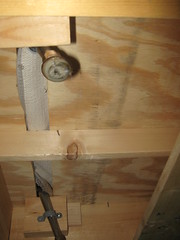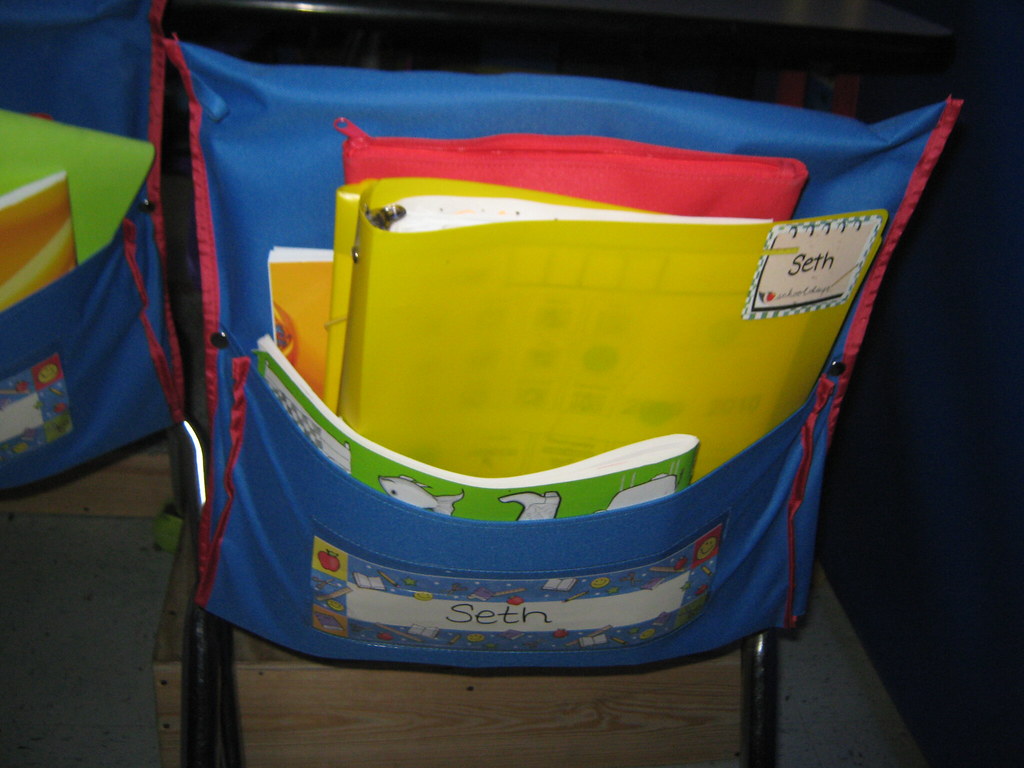 I saw a footstool in a catalog that gave me one of those "What an amazing yet simple idea! Why didn't I think of it?" moments. One footstool was a couple of hundred dollars - so I took the picture from the catalog and asked my daddy if he could make me some. Mine may not be quite as aesthetically pleasing, but they do the job!! Here are the benefits that I love.
I saw a footstool in a catalog that gave me one of those "What an amazing yet simple idea! Why didn't I think of it?" moments. One footstool was a couple of hundred dollars - so I took the picture from the catalog and asked my daddy if he could make me some. Mine may not be quite as aesthetically pleasing, but they do the job!! Here are the benefits that I love.
- Daddy put a bracket thing around the chair legs to attach the chair to the box (if you click on the picture you can see the bracket in the larger version) - this keeps the kids from being able to tip backwards in their chairs (and then fall). We have rocking chairs for that!

- Some of the boxes have little bathroom mats nailed to the top to muffle foot-stomping sounds.
- Chairs that are across from each other at the table are attached to each other so no one can push their chair backwards (I have a few students who try to get away from me and work that way).
- I also have a student who likes to tip the table over. Daddy attached the box to the table so that the table stays put.

You can see in this photo that we use a few other seating adaptations as well. Here are some of the things we use for sensory input.
- Core disks - these allow for some "wiggly" movement but aren't as distracting as sitting on a therapy ball (my students tend to bounce with great intensity on therapy balls and thus can't get any work done because they're so engaged with bouncing)
- Chair huggers and Cudlle loops (I just want to point out that the kids put these on and take them off themselves - they should NEVER be used for restraint purposes, only to provide proprioceptive/deep pressure input!)
- Not shown in this picture - some kids keep weighted lap pads on their lap for additional proprioceptive input.

This isn't really "adapting furniture", but I'm going to include it here anyway. In the video tour of my classroom, you saw cubbies where the students' pencil boxes, hygiene bags, etc. were kept. Well about 2 weeks into the school year it became clear that the cubbies weren't going to work this year. There was no good location to put them that would allow the students to get to and from the cubbies and tables without causing major traffic issues (the layout of my room last year was completely different and the cubbies worked then, it just doesn't work with the way the room is set up this year). So I bought chairpockets (I got mine here, but you can get them from lots of teacher stores or even make your own - but I'm no seamstress!). The students keep the following in their pocket.
- pencils, crayons, scissors, glue sticks (there's a little zipper bag for this)
- hygiene bag (comb/brush, nail clippers, emory board, chap stick, Q-tips, tissues, hand sanitizer)
- folder with blank journal pages
- journal (binder with completed journal pages)
- handwriting book (we use and love the Handwriting Without Tears program)
- math workbook (we use the kindergarten level of our school's math program)
- phonics dictionary (beginning sounds - for each sound we study we add pictures to that letter's page)
- some kiddos have fidgets and/or chewies attached to their pockets (there's a little loop on the pockets)





0 Responses to "Adapting furniture"
Post a Comment